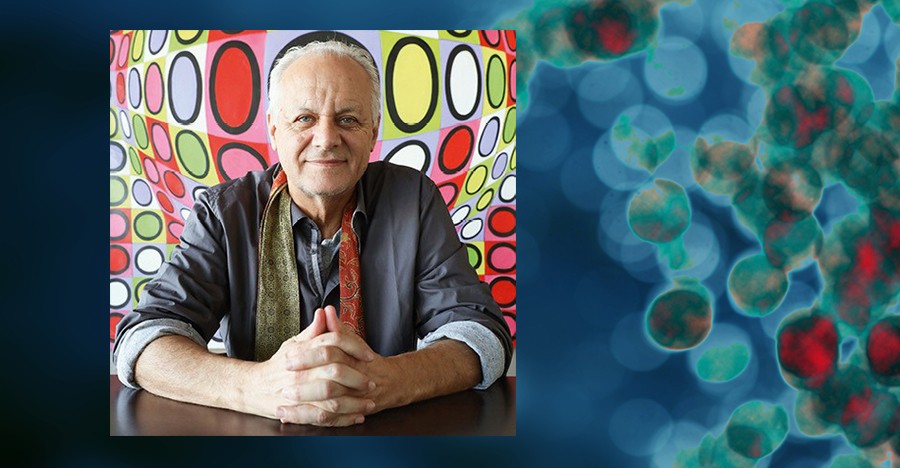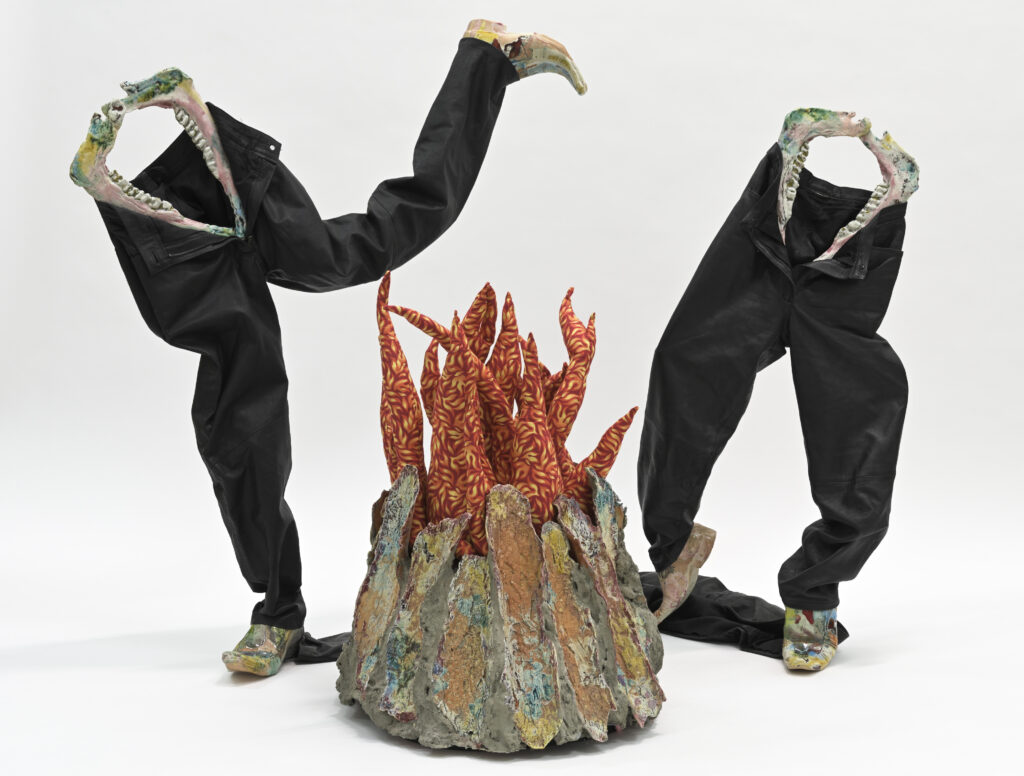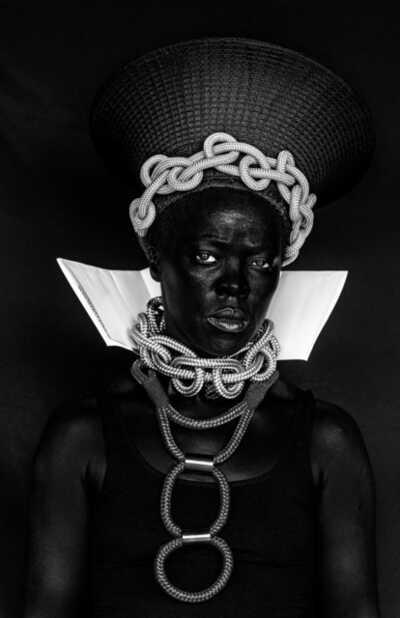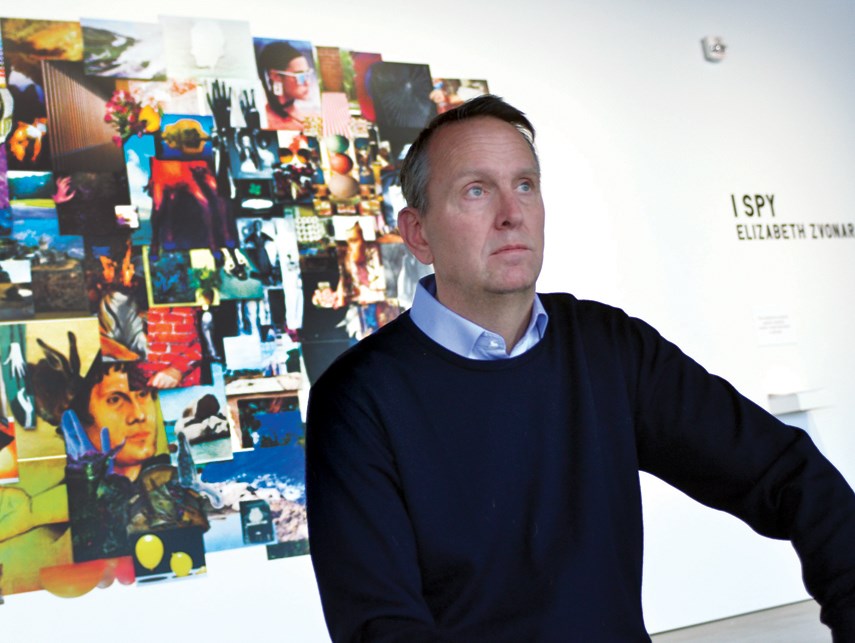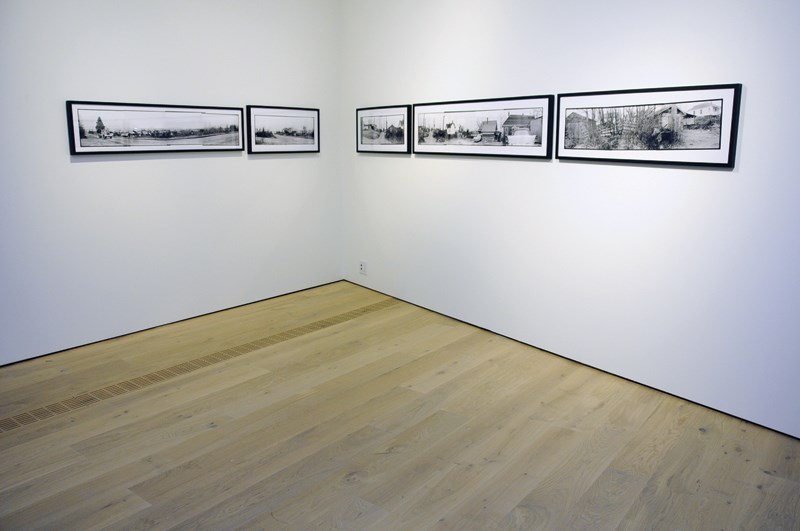According to a January 4, 2022 Berggruen Institute (also received via email), they have appointed a new crop of fellows for their research center at Peking University,
The Berggruen Institute has announced six scientists and philosophers to serve as Fellows at the Berggruen Research Center at Peking University in Beijing, China. These eminent scholars will work together across disciplines to explore how the great transformations of our time may shift human experience and self-understanding in the decades and centuries to come.
The new Fellows are Chenjian Li, University Chair Professor at Peking University; Xianglong Zhang, professor of philosophy at Peking University; Xiaoli Liu, professor of philosophy at Renmin University of China; Jianqiao Ge, lecturer at the Academy for Advanced Interdisciplinary Studies (AAIS) at Peking University; Xiaoping Chen, Director of the Robotics Laboratory at the University of Science and Technology of China; and Haidan Chen, associate professor of medical ethics and law at the School of Health Humanities at Peking University.
“Amid the pandemic, climate change, and the rest of the severe challenges of today, our Fellows are surmounting linguistic and cultural barriers to imagine positive futures for all people,” said Bing Song, Director of the China Center and Vice President of the Berggruen Institute. “Dialogue and shared understanding are crucial if we are to understand what today’s breakthroughs in science and technology really mean for the human community and the planet we all share.”
The Fellows will investigate deep questions raised by new understandings and capabilities in science and technology, exploring their implications for philosophy and other areas of study. Chenjian Li is considering the philosophical and ethical considerations of gene editing technology. Meanwhile, Haidan Chen is exploring the social implications of brain/computer interface technologies in China, while Xiaoli Liu is studying philosophical issues arising from the intersections among psychology, neuroscience, artificial intelligence, and art.
Jianqiao Ge’s project considers the impact of artificial intelligence on the human brain, given the relative recency of its evolution into current form. Xianglong Zhang’s work explores the interplay between literary culture and the development of technology. Finally, Xiaoping Chen is developing a new concept for describing innovation that draws from Daoist, Confucianist, and ancient Greek philosophical traditions.
Fellows at the China Center meet monthly with the Institute’s Los Angeles-based Fellows. These fora provide an opportunity for all Fellows to share and discuss their work. Through this cross-cultural dialogue, the Institute is helping to ensure continued high-level of ideas among China, the United States, and the rest of the world about some of the deepest and most fundamental questions humanity faces today.
“Changes in our capability and understanding of the physical world affect all of humanity, and questions about their implications must be pondered at a cross-cultural level,” said Bing. “Through multidisciplinary dialogue that crosses the gulf between East and West, our Fellows are pioneering new thought about what it means to be human.”
…
Haidan Chen is associate professor of medical ethics and law at the School of Health Humanities at Peking University. She was a visiting postgraduate researcher at the Institute for the Study of Science Technology and Innovation (ISSTI), the University of Edinburgh; a visiting scholar at the Brocher Foundation, Switzerland; and a Fulbright visiting scholar at the Center for Biomedical Ethics, Stanford University. Her research interests embrace the ethical, legal, and social implications (ELSI) of genetics and genomics, and the governance of emerging technologies, in particular stem cells, biobanks, precision medicine, and brain science. Her publications appear at Social Science & Medicine, Bioethics and other journals.
Xiaoping Chen is the director of the Robotics Laboratory at University of Science and Technology of China. He also currently serves as the director of the Robot Technical Standard Innovation Base, an executive member of the Global AI Council, Chair of the Chinese RoboCup Committee, and a member of the International RoboCup Federation’s Board of Trustees. He has received the USTC’s Distinguished Research Presidential Award and won Best Paper at IEEE ROBIO 2016. His projects have won the IJCAI’s Best Autonomous Robot and Best General-Purpose Robot awards as well as twelve world champions at RoboCup. He proposed an intelligent technology pathway for robots based on Open Knowledge and the Rong-Cha principle, which have been implemented and tested in the long-term research on KeJia and JiaJia intelligent robot systems.
Jianqiao Ge is a lecturer at the Academy for Advanced Interdisciplinary Studies (AAIS) at Peking University. Before, she was a postdoctoral fellow at the University of Chicago and the Principal Investigator / Co-Investigator of more than 10 research grants supported by the Ministry of Science and Technology of China, the National Natural Science Foundation of China, and Beijing Municipal Science & Technology Commission. She has published more than 20 peer-reviewed articles on leading academic journals such as PNAS, the Journal of Neuroscience, and has been awarded two national patents. In 2008, by scanning the human brain with functional MRI, Ge and her collaborator were among the first to confirm that the human brain engages distinct neurocognitive strategies to comprehend human intelligence and artificial intelligence. Ge received her Ph.D. in psychology, B.S in physics, a double B.S in mathematics and applied mathematics, and a double B.S in economics from Peking University.
Chenjian Li is the University Chair Professor of Peking University. He also serves on the China Advisory Board of Eli Lilly and Company, the China Advisory Board of Cornell University, and the Rhodes Scholar Selection Committee. He is an alumnus of Peking University’s Biology Department, Peking Union Medical College, and Purdue University. He was the former Vice Provost of Peking University, Executive Dean of Yuanpei College, and Associate Dean of the School of Life Sciences at Peking University. Prior to his return to China, he was an associate professor at Weill Medical College of Cornell University and the Aidekman Endowed Chair of Neurology at Mount Sinai School of Medicine. Dr. Li’s academic research focuses on the molecular and cellular mechanisms of neurological diseases, cancer drug development, and gene-editing and its philosophical and ethical considerations. Li also writes as a public intellectual on science and humanity, and his Chinese translation of Richard Feynman’s book What Do You Care What Other People Think? received the 2001 National Publisher’s Book Award.
Xiaoli Liu is professor of philosophy at Renmin University. She is also Director of the Chinese Society of Philosophy of Science Leader. Her primary research interests are philosophy of mathematics, philosophy of science and philosophy of cognitive science. Her main works are “Life of Reason: A Study of Gödel’s Thought,” “Challenges of Cognitive Science to Contemporary Philosophy,” “Philosophical Issues in the Frontiers of Cognitive Science.” She edited “Symphony of Mind and Machine” and series of books “Mind and Cognition.” In 2003, she co-founded the “Mind and Machine workshop” with interdisciplinary scholars, which has held 18 consecutive annual meetings. Liu received her Ph.D. from Peking University and was a senior visiting scholar in Harvard University.
Xianglong Zhang is a professor of philosophy at Peking University. His research areas include Confucian philosophy, phenomenology, Western and Eastern comparative philosophy. His major works (in Chinese except where noted) include: Heidegger’s Thought and Chinese Tao of Heaven; Biography of Heidegger; From Phenomenology to Confucius; The Exposition and Comments of Contemporary Western Philosophy; The Exposition and Comments of Classic Western Philosophy; Thinking to Take Refuge: The Chinese Ancient Philosophies in the Globalization; Lectures on the History of Confucian Philosophy (four volumes); German Philosophy, German Culture and Chinese Philosophical Thinking; Home and Filial Piety: From the View between the Chinese and the Western.
About the Berggruen China Center
Breakthroughs in artificial intelligence and life science have led to the fourth scientific and technological revolution. The Berggruen China Center is a hub for East-West research and dialogue dedicated to the cross-cultural and interdisciplinary study of the transformations affecting humanity. Intellectual themes for research programs are focused on frontier sciences, technologies, and philosophy, as well as issues involving digital governance and globalization.About the Berggruen Institute:
The Berggruen Institute’s mission is to develop foundational ideas and shape political, economic, and social institutions for the 21st century. Providing critical analysis using an outwardly expansive and purposeful network, we bring together some of the best minds and most authoritative voices from across cultural and political boundaries to explore fundamental questions of our time. Our objective is enduring impact on the progress and direction of societies around the world. To date, projects inaugurated at the Berggruen Institute have helped develop a youth jobs plan for Europe, fostered a more open and constructive dialogue between Chinese leadership and the West, strengthened the ballot initiative process in California, and launched Noema, a new publication that brings thought leaders from around the world together to share ideas. In addition, the Berggruen Prize, a $1 million award, is conferred annually by an independent jury to a thinker whose ideas are shaping human self-understanding to advance humankind.
You can find out more about the Berggruen China Center here and you can access a list along with biographies of all the Berggruen Institute fellows here.
Getting ready
I look forward to hearing about the projects from these thinkers.
Gene editing and ethics
I may have to reread some books in anticipation of Chenjian Li’s philosophical work and ethical considerations of gene editing technology. I wonder if there’ll be any reference to the He Jiankui affair.
(Briefly for those who may not be familiar with the situation, He claimed to be the first to gene edit babies. In November 2018, news about the twins, Lulu and Nana, was a sensation and He was roundly criticized for his work. I have not seen any information about how many babies were gene edited for He’s research; there could be as many as six. My July 28, 2020 posting provided an update. I haven’t stumbled across anything substantive since then.)
There are two books I recommend should you be interested in gene editing, as told through the lens of the He Jiankui affair. If you can, read both as that will give you a more complete picture.
In no particular order: This book provides an extensive and accessible look at the science, the politics of scientific research, and some of the pressures on scientists of all countries. Kevin Davies’ 2020 book, “Editing Humanity; the CRISPR Revolution and the New Era of Genome Editing” provides an excellent introduction from an insider. Here’s more from Davies’ biographical sketch,
Kevin Davies is the executive editor of The CRISPR Journal and the founding editor of Nature Genetics . He holds an MA in biochemistry from the University of Oxford and a PhD in molecular genetics from the University of London. He is the author of Cracking the Genome, The $1,000 Genome, and co-authored a new edition of DNA: The Story of the Genetic Revolution with Nobel Laureate James D. Watson and Andrew Berry. …
The other book is “The Mutant Project; Inside the Global Race to Genetically Modify Humans” (2020) by Eben Kirksey, an anthropologist who has an undergraduate degree in one of the sciences. He too provides scientific underpinning but his focus is on the cultural and personal underpinnings of the He Jiankui affair, on the culture of science research, irrespective of where it’s practiced, and the culture associated with the DIY (do-it-yourself) Biology community. Here’s more from Kirksey’s biographical sketch,
EBEN KIRKSEY is an American anthropologist and Member of the Institute for Advanced Study in Princeton, New Jersey. He has been published in Wired, The Atlantic, The Guardian and The Sunday Times . He is sought out as an expert on science in society by the Associated Press, The Wall Street Journal, The New York Times, Democracy Now, Time and the BBC, among other media outlets. He speaks widely at the world’s leading academic institutions including Oxford, Yale, Columbia, UCLA, and the International Summit of Human Genome Editing, plus music festivals, art exhibits, and community events. Professor Kirksey holds a long-term position at Deakin University in Melbourne, Australia.
Brain/computer interfaces (BCI)
I’m happy to see that Haidan Chen will be exploring the social implications of brain/computer interface technologies in China. I haven’t seen much being done here in Canada but my December 23, 2021 posting, Your cyborg future (brain-computer interface) is closer than you think, highlights work being done at the Imperial College London (ICL),
…
“For some of these patients, these devices become such an integrated part of themselves that they refuse to have them removed at the end of the clinical trial,” said Rylie Green, one of the authors. “It has become increasingly evident that neurotechnologies have the potential to profoundly shape our own human experience and sense of self.”
…
You might also find my September 17, 2020 posting has some useful information. Check under the “Brain-computer interfaces, symbiosis, and ethical issues” subhead for another story about attachment to one’s brain implant and also the “Finally” subhead for more reading suggestions.
Artificial intelligence (AI), art, and the brain
I’ve lumped together three of the thinkers, Xiaoli Liu, Jianqiao Ge and Xianglong Zhang, as there is some overlap (in my mind, if nowhere else),
- Liu’s work on philosophical issues as seen in the intersections of psychology, neuroscience, artificial intelligence, and art
- Ge’s work on the evolution of the brain and the impact that artificial intelligence may have on it
- Zhang’s work on the relationship between literary culture and the development of technology
A December 3, 2021 posting, True love with AI (artificial intelligence): The Nature of Things explores emotional and creative AI (long read), is both a review of a recent episode of the Canadian Broadcasting Corporation’s (CBC) science television series,The Nature of Things, and a dive into a number of issues as can be seen under subheads such as “AI and Creativity,” “Kazuo Ishiguro?” and “Evolution.”
You may also want to check out my December 27, 2021 posting, Ai-Da (robot artist) writes and performs poem honouring Dante’s 700th anniversary, for an eye opening experience. If nothing else, just watch the embedded video.
This suggestion relates most closely to Ge’s and Zhang’s work. If you haven’t already come across it, there’s Walter J. Ong’s 1982 book, “Orality and Literacy: The Technologizing of the Word.” From the introductory page of the 2002 edition (PDF),
…
This classic work explores the vast differences between oral and
literate cultures and offers a brilliantly lucid account of the
intellectual, literary and social effects of writing, print and
electronic technology. In the course of his study, Walter J.Ong
offers fascinating insights into oral genres across the globe and
through time and examines the rise of abstract philosophical and
scientific thinking. He considers the impact of orality-literacy
studies not only on literary criticism and theory but on our very
understanding of what it is to be a human being, conscious of self
and other.…
In 2013, a 30th anniversary edition of the book was released and is still in print.
Philosophical traditions
I’m very excited to learn more about Xiaoping Chen’s work describing innovation that draws from Daoist, Confucianist, and ancient Greek philosophical traditions.
Should any of my readers have suggestions for introductory readings on these philosophical traditions, please do use the Comments option for this blog. In fact, if you have suggestions for other readings on these topics, I would be very happy to learn of them.
Congratulations to the six Fellows at the Berggruen Research Center at Peking University in Beijing, China. I look forward to reading articles about your work in the Berggruen Institute’s Noema magazine and, possibly, attending your online events.
